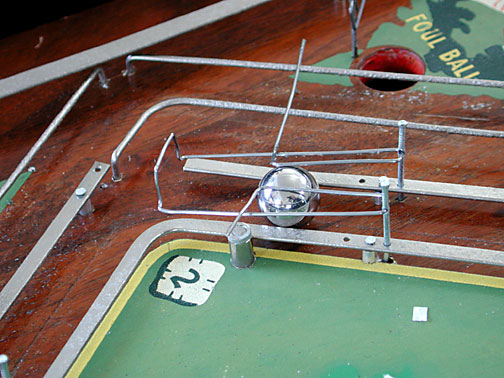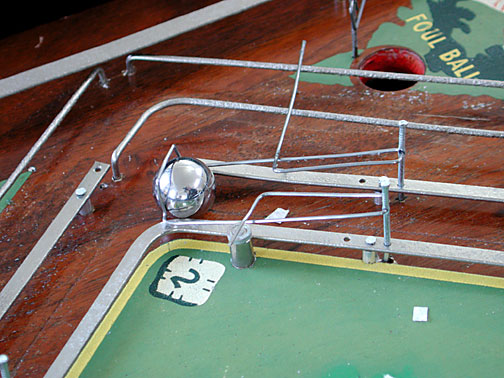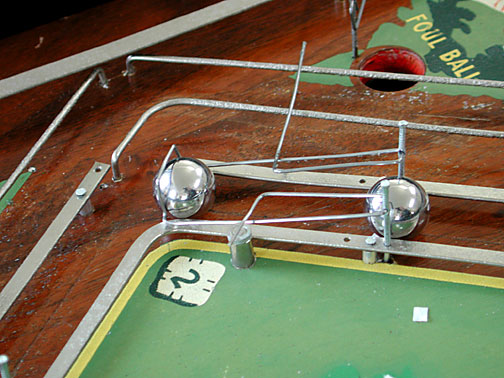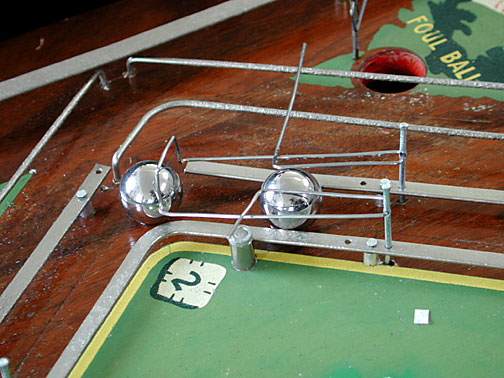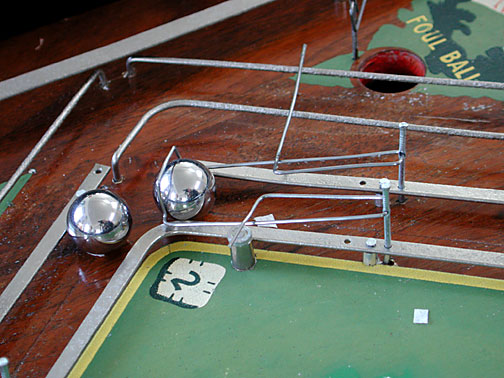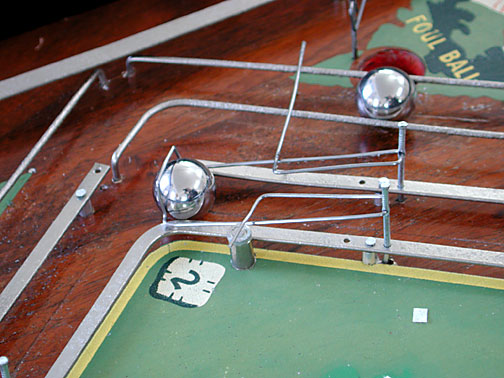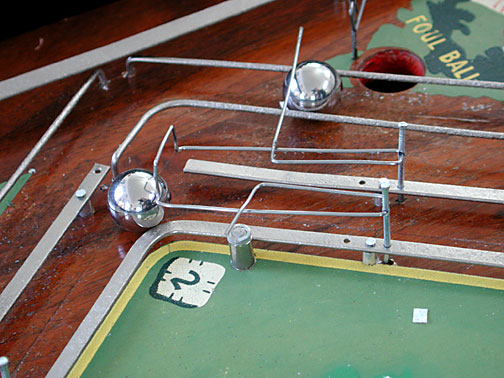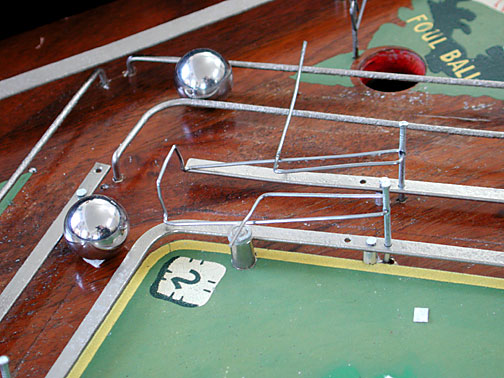Base Running Gates (incorrectly!)
(Mouse over the buttons to show the action or over PLAY to animate.)
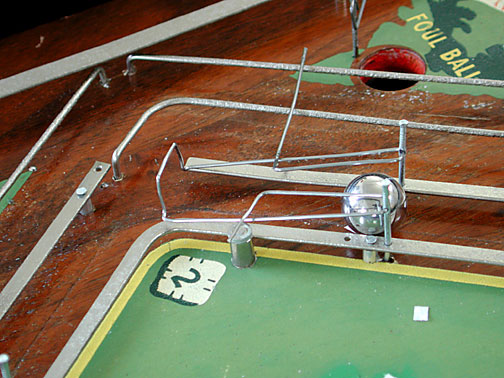
(explanations, mouse over button to display the numbered step)
Objectives
The objectives for base running mechanisms are:
- accept a ball as a base runner
- position the base runner (ball) on the base according to the hit accomplished by the player
- advance the base runners according to the rules of baseball (keep the base runners in position)
- keep the base runners in order.
Additional Notes:
- The wire frame is carefully designed to serve multiple functions.
- The first ball is allowed under the ramp of the wire frame but is captured by the square end.
- The second ball will release any balls already captured by raising the gate. Unfortunately the release ball must start rolling and will not keep up with any balls in the upper channels.
- A hit that advances the base runner, such as one coming in one of the two upper channels, will release the base runner at second and will continue on.
- Note the reset button just to the right of the second base drawing on the diamond. This button raises the wire frame and releases all balls when the coin slide is pushed in.
- The adjustment and shape of the wire frame is absolutely critical to proper functioning. The depth of the ramp that raises the wire frame, the distance from the end of the wire ramp to the square gate, and the shape of the square gate are all critical.
- The base runners do not maintain their correct positions when running the bases. View this animation of a home run to see some of the problems.
- The picture of the playfield below shows the various channels allocated to each hit and out. Reading the gates from left to right, Home Run, 3rd (triple), 1st (base hit), and 2nd (double). You can see the gates that control first, second and third bases.
(my thanks to Gary for editing this page)
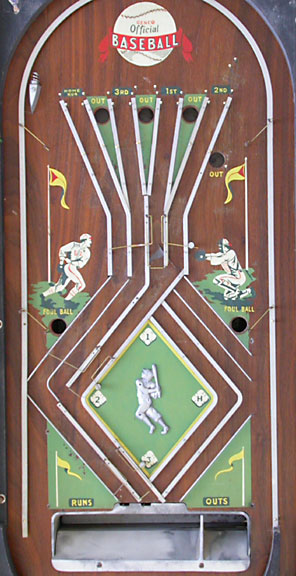

See if you can simulate the balls for a single, double and triple in the gates above.

